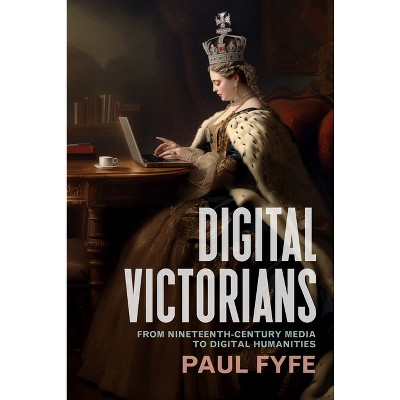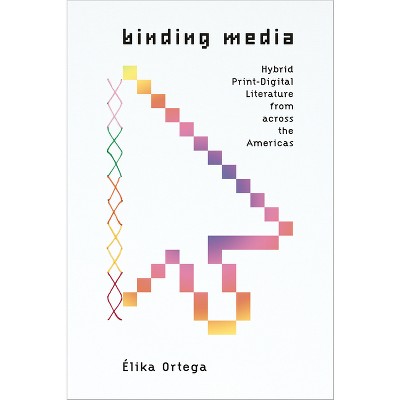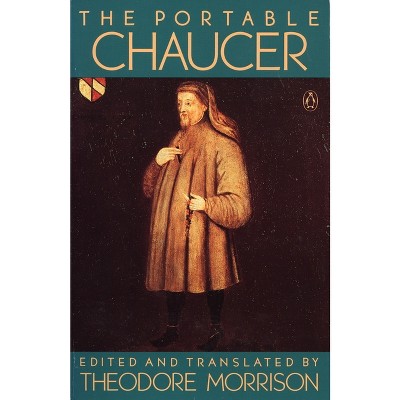Sponsored

Reading Typographically - (Stanford Text Technologies) by Geoffrey Turnovsky (Hardcover)
In Stock
Sponsored
About this item
Highlights
- Anxieties about the fate of reading in the digital age reveal how deeply our views of the moral and intellectual benefits of reading are tied to print.
- About the Author: Geoffrey Turnovsky is Associate Professor of French at the University of Washington, Seattle.
- 328 Pages
- Literary Criticism, European
- Series Name: Stanford Text Technologies
Description
About the Book
"Anxieties about the fate of reading in the digital age reveal how deeply our views of the moral and intellectual benefits of reading are tied to print. These views take root in a conception of reading as an immersive activity, exemplified by the experience of "losing oneself in a book." Against the backdrop of digital distraction and fragmentation, such immersion leads readers to become more focused, collected, and empathetic. How did we come to see the printed book as especially suited to deliver this experience? Print-based reading practices have historically included a wide range of modes, not least the disjointed scanning we associate today with electronic text. In the context of religious practice, literacy's benefits were presumed to lie in such random-access retrieval, facilitated by indexical tools like the numbering of Biblical chapters and verses. It was this didactic, hunt-and-peck reading that bound readers to communities. Exploring key evolutions in print in 17th- and 18th-century France, from typeface, print runs, and format to editorial organization and punctuation, this book argues that typographic developments upholding the transparency of the printed medium were decisive for the ascendancy of immersive reading as a dominant paradigm that shaped modern perspectives on reading and literacy"--Book Synopsis
Anxieties about the fate of reading in the digital age reveal how deeply our views of the moral and intellectual benefits of reading are tied to print. These views take root in a conception of reading as an immersive activity, exemplified by the experience of "losing oneself in a book." Against the backdrop of digital distraction and fragmentation, such immersion leads readers to become more focused, collected, and empathetic.
How did we come to see the printed book as especially suited to deliver this experience? Print-based reading practices have historically included a wide range of modes, not least the disjointed scanning we associate today with electronic text. In the context of religious practice, literacy's benefits were presumed to lie in such random-access retrieval, facilitated by indexical tools like the numbering of Biblical chapters and verses. It was this didactic, hunt-and-peck reading that bound readers to communities.
Exploring key evolutions in print in 17th- and 18th-century France, from typeface, print runs, and format to punctuation and the editorial adaptation of manuscript and oral forms in print, this book argues that typographic developments upholding the transparency of the printed medium were decisive for the ascendancy of immersive reading as a dominant paradigm that shaped modern perspectives on reading and literacy.
Review Quotes
"Reading Typographically deepens our understanding of print-based reading practices over time and beautifully illustrates how typographic innovations were instrumental in shaping the modern conception of immersive reading, which is in many ways considered the ultimate reading experience." --Hélène Visentin, H-France
"The best studies are those that open productive new lines of inquiry. Reading Typographically should be among those works: it is an important contribution to the conversation about early modern book and literary history; it is beautifully written and well researched; it should be read immersively, absorptively for many years to come." --Erec R. Coch, H-France
"Turnosvky's study is an insightful, persuasive contribution that will no doubt prove indispensable to not only those studying typography, the history of reading, and the history of the book, but also to those invested in the study of galanterie and the Mercure galant." --Caitlin Dahl, H-France
"A delightful book on a rather enigmatic topic, it can be profitably read not just by the few who wish to be a professor of French, but the many who--like their seventeenth-century counterparts--were eager to read a fine book to advance themselves." --Cliff Cunningham, Sun News Austin
"Brilliantly joining literary criticism with book history, this superbly researched study explores the emergence in the 18th century 'reading revolution' of a new kind of 'immersive' reading, abetted by new kinds of page layout and typography.... Highly recommended." --D. L. Patey, CHOICE
"This book will shift discussions of the public sphere, imagined communities, and the role of the public intellectual. In the looming controversies surrounding AI in education, this book makes the case against fetishizing one historically specific kind of reading." --George Hoffmann, University of Michigan
"This is a fascinating study. Reading Typographically is an important contribution to our histories of reading, and essential for students and historians of reading." --Jennifer Richards, University of Cambridge
"This provocative and exciting book considers how typographical devices were used for erasing the perception of the materiality of the text and create an unmediated relationship between the reader and characters' voices or the writer's heart. Important and innovative." --Roger Chartier, Collège de France
About the Author
Geoffrey Turnovsky is Associate Professor of French at the University of Washington, Seattle. He is the author of The Literary Market: Authorship and Modernity in the Old Regime (2011).Shipping details
Return details
Trending Poetry











